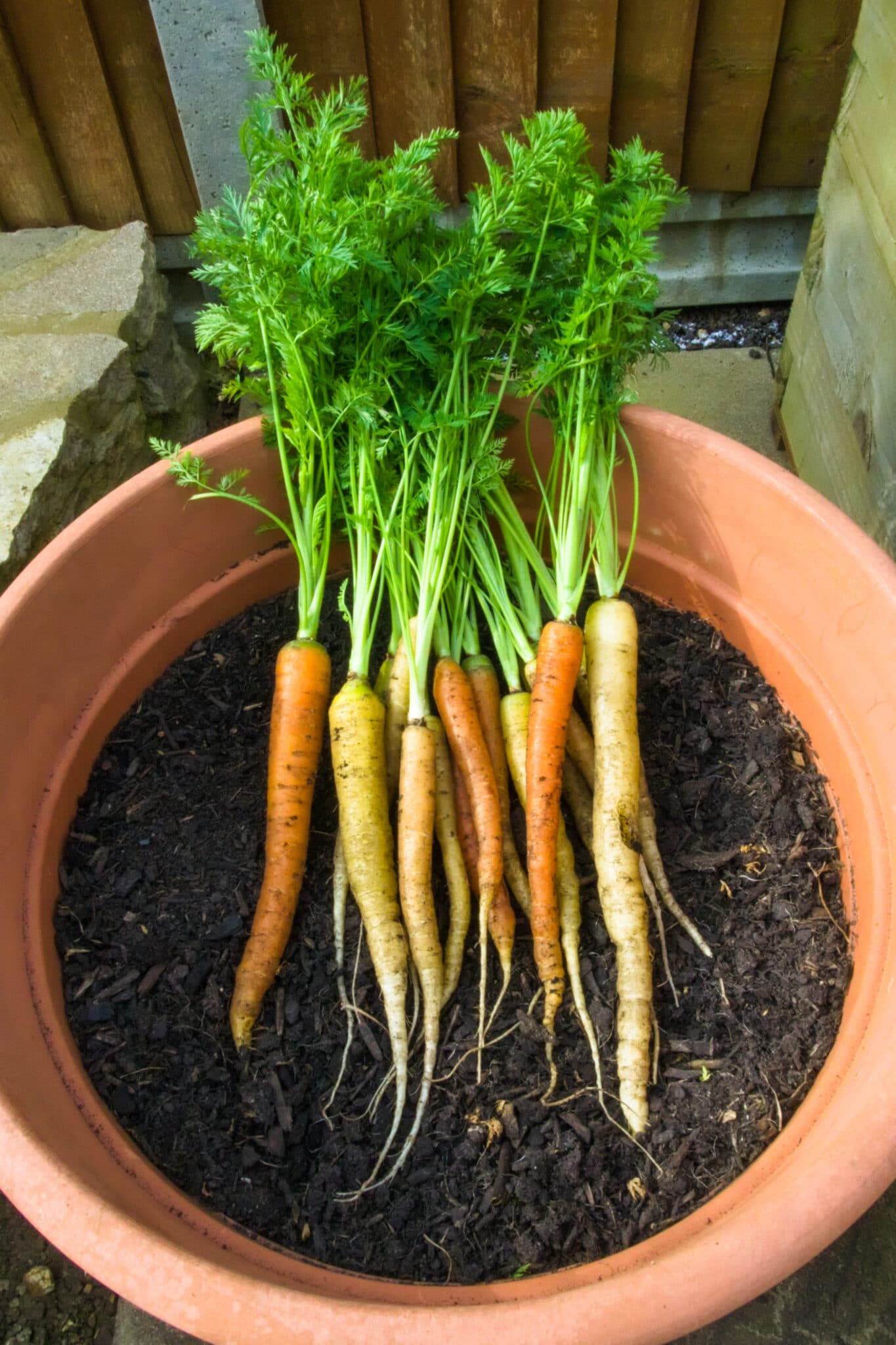How to Grow Carrots in Containers Successfully: A Comprehensive Guide

Growing carrots in containers is like embarking on a culinary adventure right in your own backyard, balcony, or even indoors. Imagine the satisfaction of harvesting crisp, vibrant carrots from your very own urban garden. Whether you're a seasoned gardener or a novice looking to dip your toes into container vegetable gardening, this guide will walk you through every step of the process. Let's dive in and explore how to grow carrots in containers successfully!
Why Grow Carrots in Containers?
Container vegetable gardening offers numerous benefits, especially for those with limited space. It allows you to grow fresh, organic produce in small spaces, making it perfect for urban gardening ideas. Plus, growing carrots indoors means you can enjoy fresh vegetables year-round, regardless of the weather.
Choosing the Right Container
Selecting the right container is crucial for successful carrot growth. Opt for a container that is at least 12 inches deep to accommodate the carrot roots. Plastic, ceramic, or wooden containers all work well, but ensure they have adequate drainage holes to prevent waterlogging.
Selecting the Best Carrot Varieties for Containers
Not all carrot varieties are suitable for container gardening. Choose compact, short-rooted varieties like 'Paris Market,' 'Thumbelina,' or 'Short 'n Sweet.' These varieties are specifically bred for small space container gardening and will thrive in your pots.
Preparing the Soil
The soil is the foundation of your carrot garden. Use a well-draining potting mix enriched with compost. Avoid using garden soil, as it can be too heavy and compacted for container gardening. A light, fluffy mix will allow your carrots to grow straight and strong.
Planting Your Carrots
Step 1: Sow the Seeds
Sow carrot seeds directly into the container, spacing them about 1-2 inches apart. Cover the seeds lightly with a thin layer of soil, ensuring they are not buried too deeply.
Step 2: Water Gently
Water the seeds gently using a watering can with a fine rose attachment. Keep the soil consistently moist but not waterlogged.
Step 3: Provide Adequate Light
Carrots need plenty of sunlight to grow. Place your container in a spot that receives at least 6-8 hours of sunlight daily. If you're growing carrots indoors, consider using grow lights to supplement natural light.
Carrot Care Tips
Watering
Consistent watering is key to growing healthy carrots. Water your carrots regularly, ensuring the soil remains moist but not soggy. Overwatering can lead to root rot, while underwatering can result in stunted growth.
Fertilizing
Carrots benefit from regular fertilization. Use a balanced liquid fertilizer every 2-4 weeks to provide essential nutrients. Avoid over-fertilizing, as too much nitrogen can lead to excessive leaf growth at the expense of root development.
Thinning
Once your carrot seedlings have sprouted, thin them out to about 2-3 inches apart. This gives each plant enough space to grow and prevents overcrowding, which can lead to misshapen roots.
Pest Control
Keep an eye out for common carrot pests like carrot rust flies and aphids. Use organic pest control methods such as neem oil or insecticidal soap to keep your carrots healthy and pest-free.
Harvesting Your Carrots
The moment you've been waiting for—harvesting your homegrown carrots! Carrots are typically ready to harvest about 70-80 days after planting. Gently loosen the soil around the carrots and pull them out carefully to avoid damaging the roots.
Troubleshooting Common Issues
Misshapen Carrots
If your carrots are misshapen, it could be due to overcrowding or poor soil conditions. Ensure your carrots have enough space to grow and use a well-draining potting mix.
Slow Growth
Slow growth can be caused by insufficient light or nutrients. Make sure your carrots are getting enough sunlight and fertilize them regularly.
Pests and Diseases
Regularly inspect your carrots for signs of pests and diseases. Use organic pest control methods and ensure proper air circulation to prevent fungal diseases.
Conclusion
Growing carrots in containers is a rewarding experience that allows you to enjoy fresh, homegrown produce even in small spaces. By choosing the right container, selecting the best carrot varieties, and providing proper care, you can successfully grow carrots indoors or outdoors. So, why not give it a try? Your culinary adventures await!
FAQs
1. What are the best carrot varieties for container gardening?
Compact, short-rooted varieties like 'Paris Market,' 'Thumbelina,' and 'Short 'n Sweet' are ideal for container gardening.
2. How deep should the container be for growing carrots?
The container should be at least 12 inches deep to accommodate the carrot roots.
3. How often should I water my container-grown carrots?
Water your carrots regularly, ensuring the soil remains consistently moist but not waterlogged.
4. How do I know when my carrots are ready to harvest?
Carrots are typically ready to harvest about 70-80 days after planting. Gently loosen the soil around the carrots and pull them out carefully.
5. What should I do if my carrots are misshapen?
Misshapen carrots can be caused by overcrowding or poor soil conditions. Ensure your carrots have enough space to grow and use a well-draining potting mix.
/Containergarden-GettyImages-155360996-5a0917a1ec2f640036a63a1b.jpg)

0 Response to "How to Grow Carrots in Containers Successfully: A Comprehensive Guide"
Post a Comment